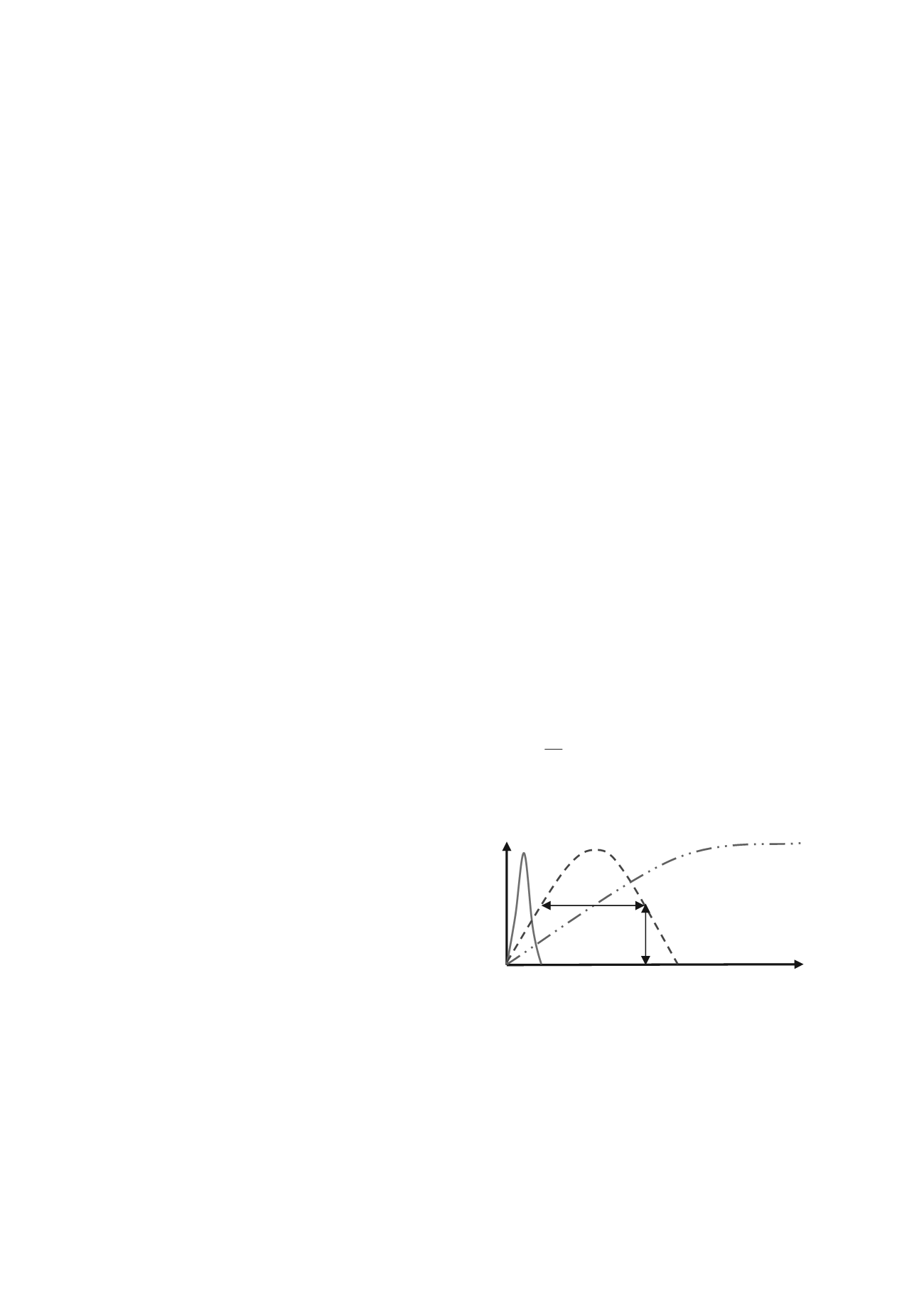
2847
Pseudo-static Pile Load Test: Experience on Pre-bored and Large Diameter Piles
Tests de chargement pseudo-statique sur pieux: experiences sur pieux forés de grands diametres
Rinaldi V.A.
National University of Cordoba, Argentina.
Viguera R.
Principal Engineer, CIM SRL consultants, Cordoba, Argentina
ABSTRACT: Pseudostatic load test is usually employed as an alternative to the conventional static load test for piles. Recent
developments showed that the well developed Statnamic tests can be substantially simplified by using a hanging weight falling over a
cushion system that allows increasing the time length of the generated stress pulse. This work describes the design of the test method
and a recently experience related to the application of the pseudostatic load test used to evaluate the bearing capacity of large diameter
piles. The performed test showed that using moderate loads from 10 to 20 tons falling from 10 cm to 120 cm and cushions prepared at
varied stiffness allowed to reach more than 800 tons of loading and the fully mobilization of the pile ultimate capacity. The main
advantages of the proposed pseudostatic tests respect to the conventional Statnamic tests is the possibility to apply load increments by
steps, the repeatability of each loading step and the simpler test setup required by the former.
RÉSUMÉ : Des essais de chargement pseudo-statique ont été récemment proposés comme alternative à l’essai de chargement statique
classique sur pieux. Les développements expérimentaux récents ont montrés que ces tests peuvent être simplifiés par l’utilisation
d’une masse suspendue qui tombe sur un système amortissant. Ainsi cette technique permet d’augmenter le temps de l’application de
la charge impulsionnelle. Ce travail décrit la conception de l’expérience et les essais qui ont récemment été effectués pour évaluer la
capacité portante de pieux de grand diamètre. Les tests effectués ont montrés que l’utilisation de charges modérées de 10 à 20 tonnes
tombant d’une hauteur de 10 à 120 cm sur des amortisseurs à rigidités contrôlés, permettent de simuler plus de 800 tonnes de
chargement et d’atteindre la charge ultime du pieu. Les principaux avantages des essais pseudo-statiques sont la possibilité d'appliquer
des incréments de charge, une répétabilité de chaque chargement et un essai plus simple à réaliser.
KEYWORDS: Pile load test- Statnamic- pseudostatic test- bearing capacity-shaft resistance, tip resistance.
1 INTRODUCTION.
The in-situ determination of bearing capacity of the pre-bored
piles has historically been performed by means of the
conventional static load tests as described in the ASTM C1143-
69. The implementation of this type of test on piles of very large
ultimate capacity becomes cumbersome resulting fundamentally
from the extremely heavy and complex system for the load
reaction. The interpretation of the tests is straight forward
however it may be affected by the proximity of the piles of
reaction. To overcome these difficulties ather alternatives such
as dynamic load test was proposed. In this test the load is
applied by the impact of a falling mass dropped from various
heights depending on the desired loading requirements. The
maximum height depends on the capacity of the pile. The
interpretation of this test is performed by using the wave
equation (Smith, 1960) applied to a discrete soil-pile model,
from which are determined the static shaft and tip soil resistance
and the load-settlement curve of the pile. Conceptually the
method is very robust; nevertheless its main limitation is that
the applied test loads produce tensile stresses that may cause
breakage of the pile shaft.
Pseudoestátic methods become an interesting alternative that
significantly overcomes the limitations of the other types of
tests. In this group can be mentioned the Statnamic method (see
for example Bermingham and Janes, 1989), and the non-
conventional tests based on free-falling and accelerated falling
mass impinging on an special cushion (eg. Schellingerhout and
Revoort, 1996; Matsuzawa et al., 2008; Miyasaka et al 2008).
The fundamental difference with respect to the dynamic tests
is the of time of application of the load as shown in Figure 1. In
pseudoestáticos methods, the time of application of the load
should be:
p
V
l
t
2
50
(1)
Where
l
is the pile length and V
p
is the wave propagation
velocity of the pile shaft which for concrete is usually adopted a
value of 4100 m/s.
Amplitude (KN)
Estatic
Pseudoestátic
Dynamic
t
50
A
max
/2
Time (ms)
Figure 1. Loading functions of the different loading test for piles.
Usually it is recommended for a pseudo-static condition:
(2)
l
a tV
p
10 7
50
If assumed the loading condition imposed by equation (1)
and (2), the interpretation of the soil-pile interaction can be that
of the simple physical model described in Figure 2.


